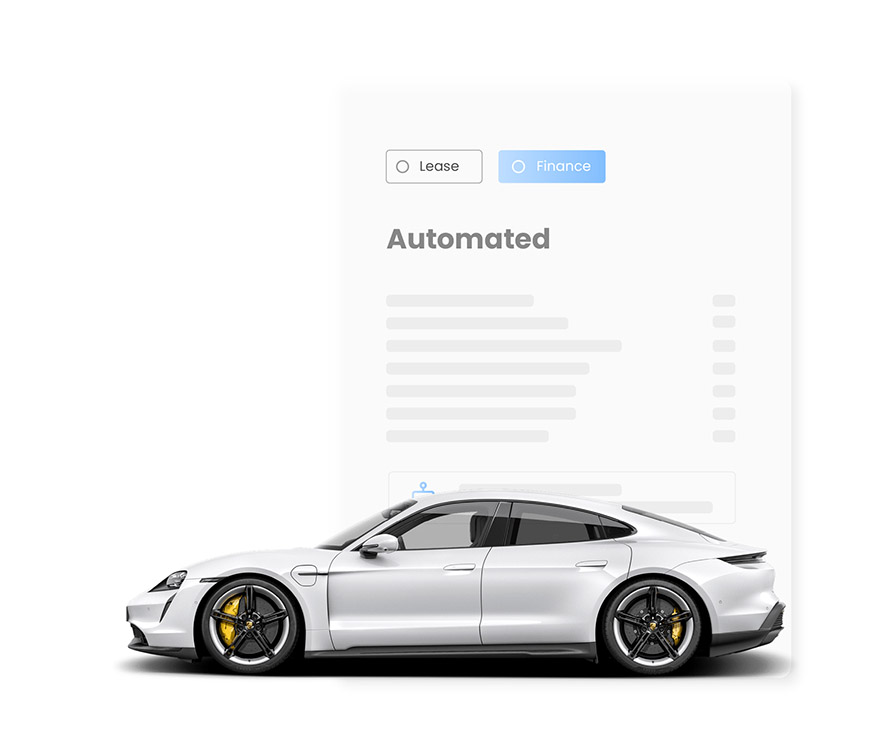How intelligent decision-making is revolutionizing auto retail
Automated decisioning in auto finance uses AI and real-time data to approve deals in seconds, cut underwriting costs, reduce risk, and deliver a seamless experience.

The mandate for speed and efficiency
In today's fast-paced commerce, consumers expect instant gratification, but auto finance faces a bottleneck. Slow, manual approval processes. This delay creates friction, leading to customer anxiety, hesitation, and lost deals due to inconsistent decisions and high costs.
Decision-making in automotive retail has shifted from intuition to intelligence. AI and tightly integrated systems now shape how dealerships and OEMs respond to market signals, price inventory, engage buyers, and move deals forward. To stay relevant, operators must build for speed, efficiency, higher conversion, and the level of customer experience today’s buyers expect.
The friction points in legacy decisioning
To understand the transformative power of intelligent decision making, we must address the foundational shortcomings of legacy financing operations. These friction points inhibit speed, inflate costs, and directly compromise the ability to close deals efficiently.
Data fragmentation and silos
The underwriting process involves an inherently complex data pull. Analysts must review applications by aggregating information from disparate systems: the customer relationship management (CRM) platform, external credit bureaus, internal historical data, and the core leasing/loan management platform.
This lack of unification results in slow review cycles. Human analysts are forced to spend valuable time manually reconciling data across multiple screens, verifying consistency, and assembling a complete risk picture, significantly increasing the potential for human error and prolonging the time-to-decision.
Inconsistent and conservative risk profiles
Most legacy decisioning relies on outdated, inflexible scorecards and static rule engines. These systems lack the nuance and dynamism to accurately assess modern credit profiles, particularly for emerging customer segments like the gig economy worker or individuals with thin credit files.
The consequence is often overly conservative lending practices. This can lead to the unnecessary decline of perfectly good customers who then take their business elsewhere, or to inconsistent decisioning across different sales channels or dealership networks. A conservative approach is a costly one, resulting in missed opportunities and unoptimized portfolios.
High cost-to-serve and operational inefficiency
Every manual touchpoint in the application, review, and approval process increases the cost-to-serve a deal. As operational expenses rise, margins shrink, and the ability to scale efficiently is compromised. The goal for high-volume, standard applications must be “lights-out” processing, where the system autonomously handles straightforward applications, while routing complex cases to specialists.
Beyond basic rule engines
True ADM moves far beyond simple if-then logic. While basic rule engines can handle clear pass/fail criteria, they cannot manage complex risk scenarios or adapt to shifting market conditions. Intelligent ADM utilizes sophisticated machine learning (ML) models that continuously learn, adapt, and predict risk with a far greater degree of accuracy than static scorecards could ever achieve.
The dual engine of ADM: integration and AI
The success of ADM rests on two indispensable pillars:
- Deep integration: This is the foundational requirement. ADM requires a centralized platform capable of pulling, standardizing, and feeding data from all sources (internal and external) in real-time. Without this comprehensive integration, any AI model will operate on incomplete or stale data, negating its value. A unified platform is what allows decisions to be informed, immediate, and comprehensive.
- Intelligent AI: This is the processing power. AI models analyze multiple data points, far beyond the traditional combination of a few data inputs and a credit score, to construct truly holistic and predictive risk profiles. This includes analysis of application consistency, behavioral data, and emerging demographic signals.
Approvals in seconds, not hours
The primary, measurable benefit of ADM is speed. By integrating data and applying AI in milliseconds, the system can instantly process and decide upon many applications. This liberation of human capital allows specialized staff to focus their expertise exclusively on the complex, unique, or high-value edge cases that truly require human judgment.
Here's a visual representation of the shift:
Precision, profitability, and the competitive edge
ADM, powered by ML/AI, transforms the underwriting process by bringing unprecedented precision and speed to credit decisions. By analyzing comprehensive data inputs beyond traditional credit scores, these intelligent systems can assess risk more accurately, supporting better portfolio outcomes and more competitive pricing strategies. Modern platforms integrate ID verification and fraud prevention capabilities directly into the decision flow, helping to identify and mitigate potential risks before they become losses.
The true power of ADM lies in its ability to deliver a seamless "click-to-keys" digital experience. By enabling deals that close in minutes rather than hours or days, the technology eliminates the friction and waiting times that plague traditional processes. This speed translates directly into increased customer satisfaction and higher deal completion rates. Moreover, ADM ensures consistent, high-accuracy decisions across all channels, whether online or in-store, creating a truly unified omnichannel experience.
For dealerships and sales teams, the impact is transformative. With routine credit decisions handled autonomously in seconds, sales professionals can redirect their energy from administrative paperwork to what they do best: building relationships and closing deals. This operational efficiency doesn't just improve the customer experience; it fundamentally changes the economics of auto finance.
The business case is compelling. According to McKinsey & Company, organizations implementing advanced automated decisioning can achieve 20-30% reductions in risk management costs and 30-50% reductions in underwriting costs. When combined with higher conversion rates from faster approvals, ADM becomes not just an operational improvement, but a decisive competitive advantage in an increasingly digital marketplace.
The future is fully automated
Automated decision-making, powered by sophisticated AI and robust integration, is reshaping the DNA of auto finance and retail. It simultaneously solves core business challenges such as inconsistent risk, high costs, and slow processes while driving superior customer experiences. This integration of intelligent technology drives unparalleled speed and accuracy, directly translating to superior CX and higher deal closure rates.
The journey to a fully automated, unified finance ecosystem requires a technology partner with proven experience in end-to-end platform integration and advanced AI deployment. Embracing ADM is the definitive step toward maximizing efficiency, profitability, and customer trust in the competitive auto finance landscape.
For more insights into optimizing your finance operations, contact us at Netsol or explore our resources on AI.
Related blogs

Why connected decision flows are becoming the new baseline in auto retail

NETSOL to exhibit at the ELFA Annual Convention 2025




